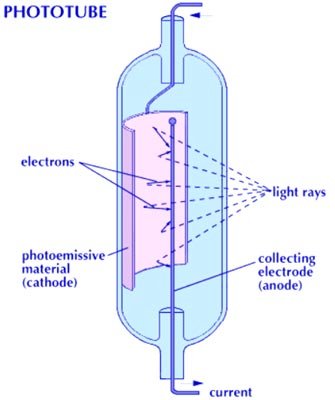Which cell has the lowest sensitivity (current per unit of luminous flux)?
Which cell has the lowest sensitivity (current per unit of luminous flux)?
Right Answer is:
Vacuum photo-emissive cell
SOLUTION
Vacuum photo-emissive cell has the lowest sensitivity (current per unit of luminous flux).
- In photoemissive cells or phototubes, the emission of electrons is caused by the energy of a light beam striking a metallic surface having a low work function.
- This sensitive surface is enclosed in a vacuum, a gas-filled envelope or quartz, and the emitted electrons are captured by a positive anode.
Photoemissive cells are of two types.
(i) Vacuum photo-emissive cell or phototube
(ii) Gas-filled photoemissive cell or gas phototube.
- In the vacuum photo-tube, the cathodic surface is treated with low work-function material and a small wire is used as an anode.
- The cathode is semicircular in appearance. The anode collects the electrons emitted when the light strikes the light-sensitive cathode.
- Anode voltages are large enough to achieve current saturation, i.e., all electrons emitted by voltages over about 40 volts reach the anode.
- The sensitivity of vacuum cells is low, being about 30 PA per lumen.

- The current output of a vacuum phototube is only a few micro-amperes, which is very small.
- To increase the current output and sensitivity for a given luminous flux, an inert gas, usually argon or neon, is introduced at low pressure to cause ionization.
- Ionization by the collision of electrons with gas molecules increases the current five to ten times.
- This effect is also known as the thermionic effect.
